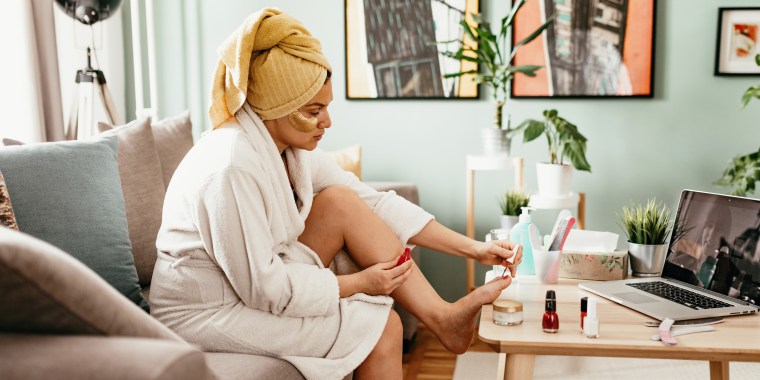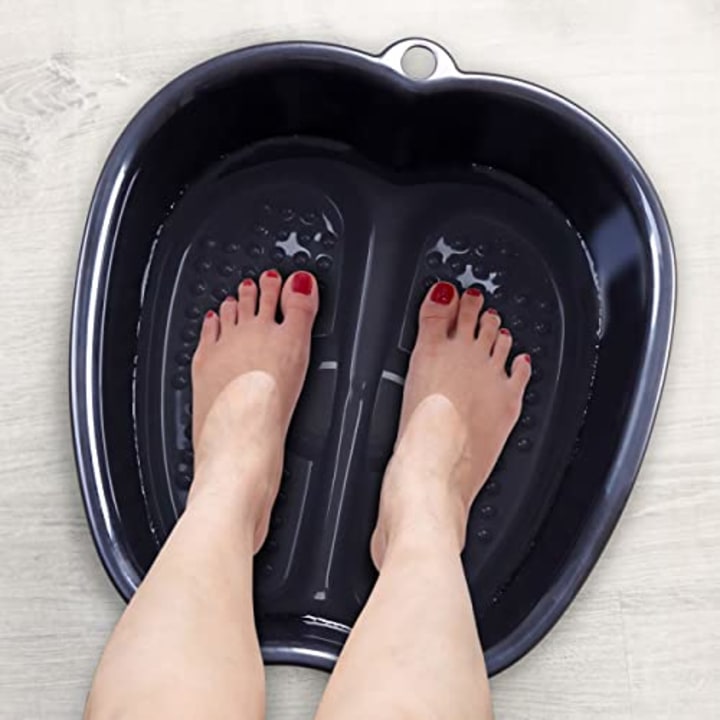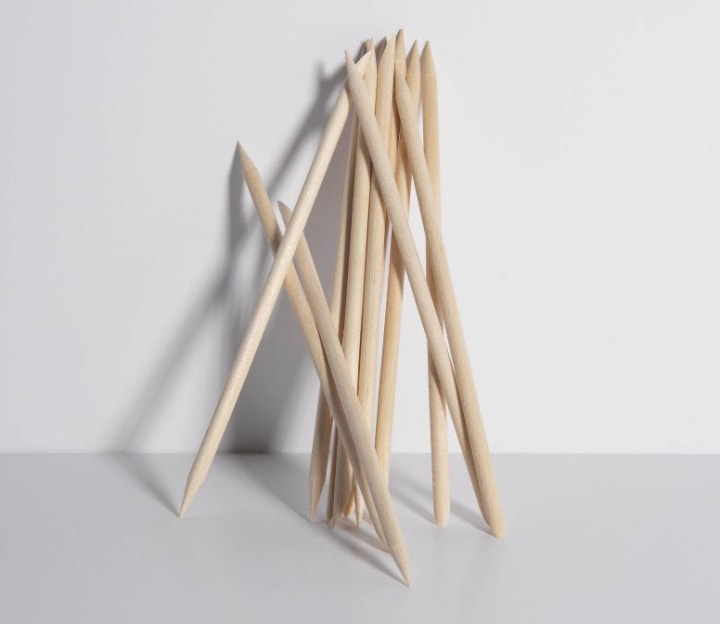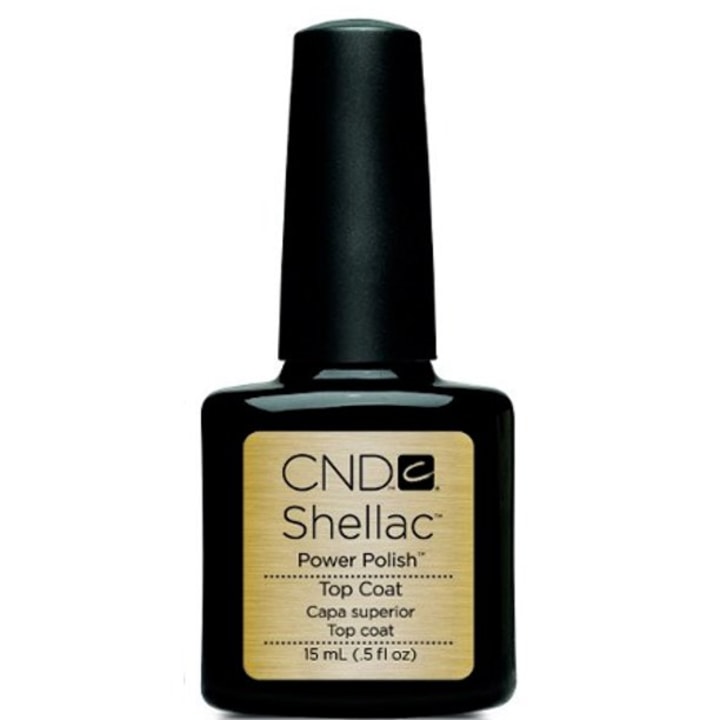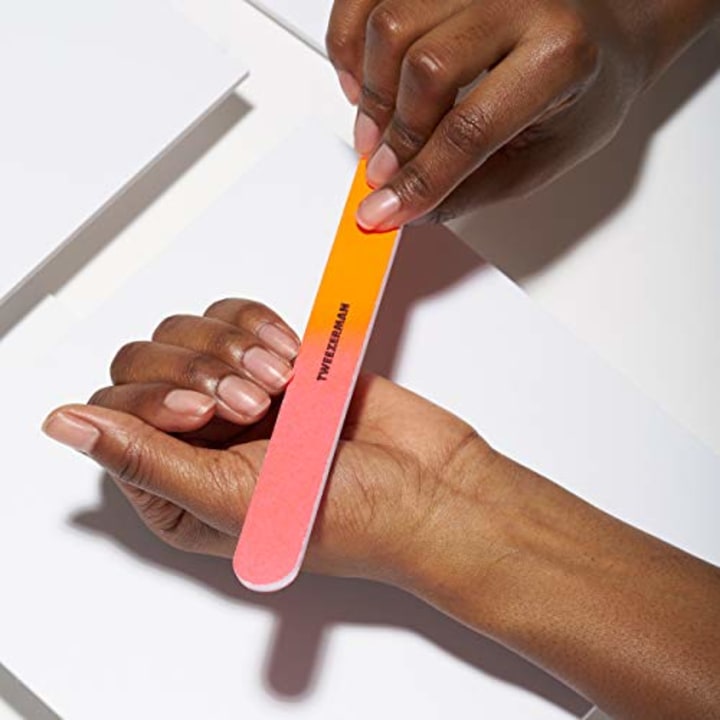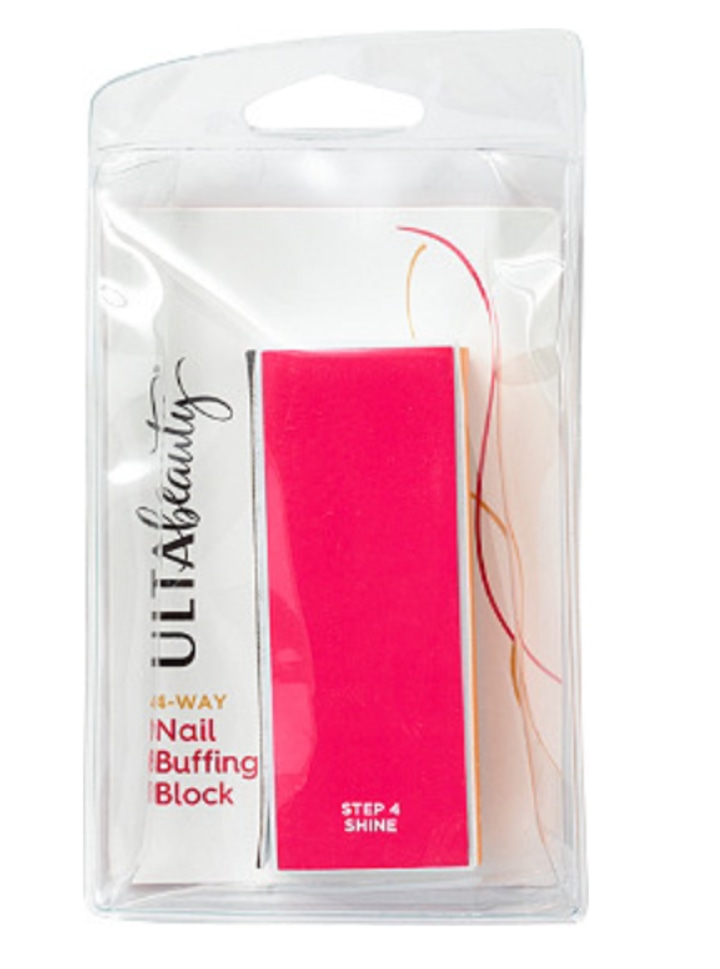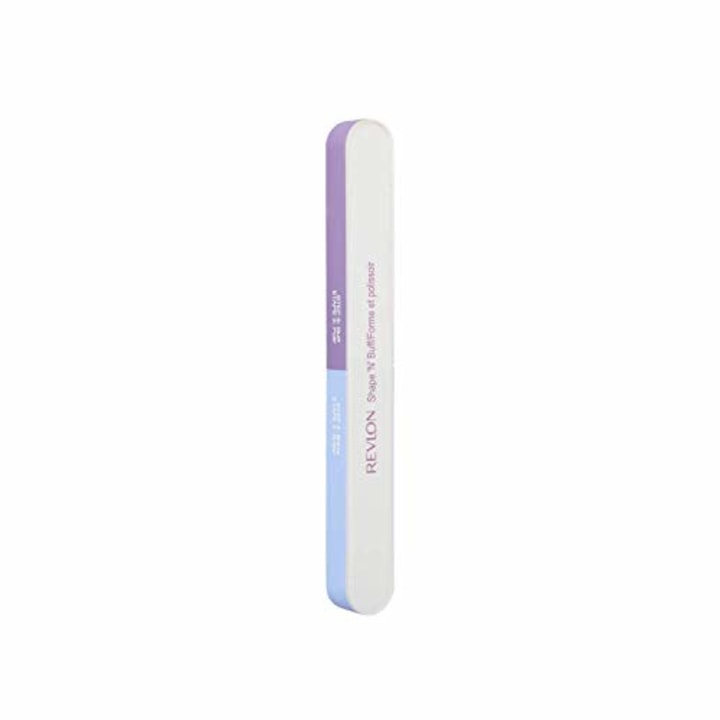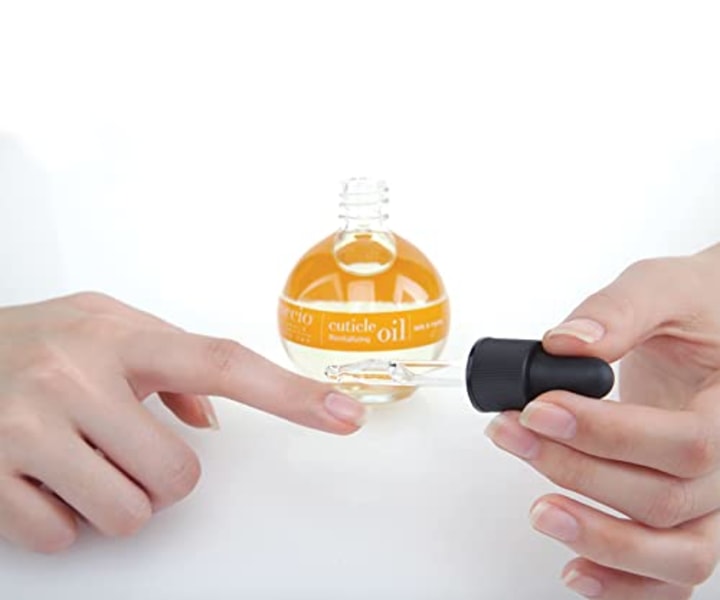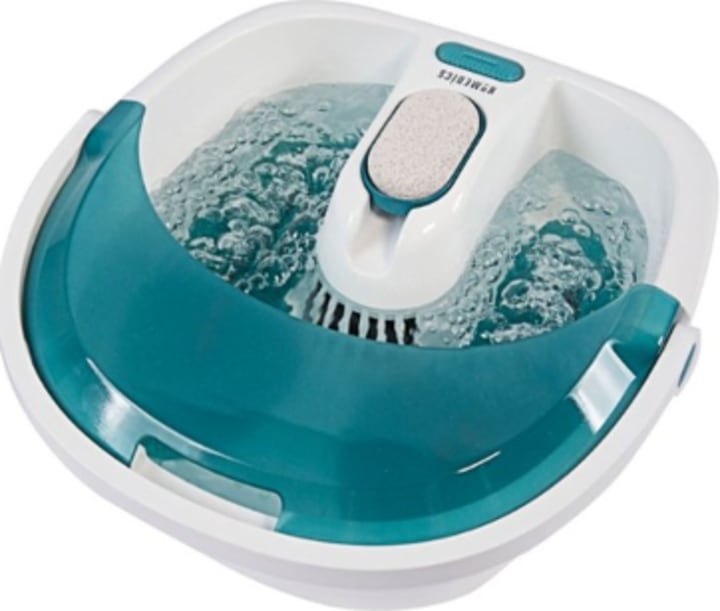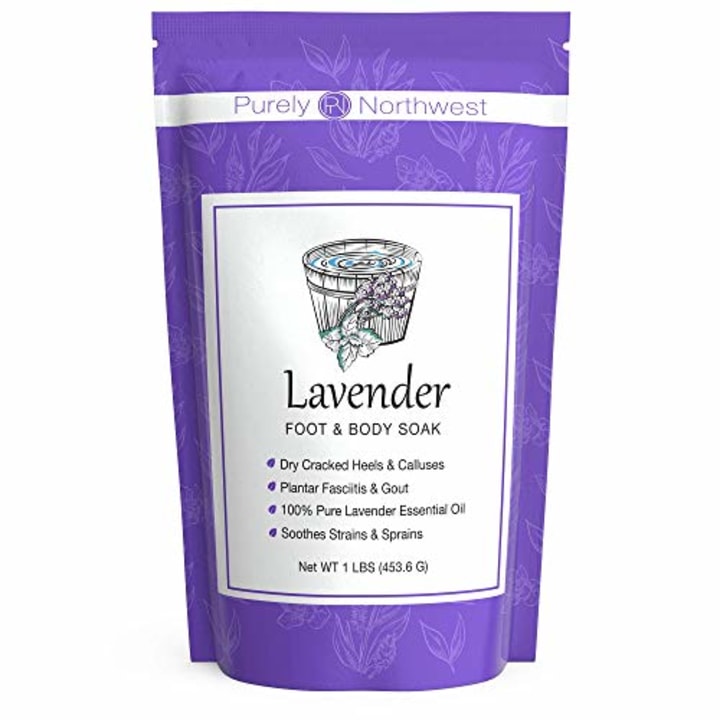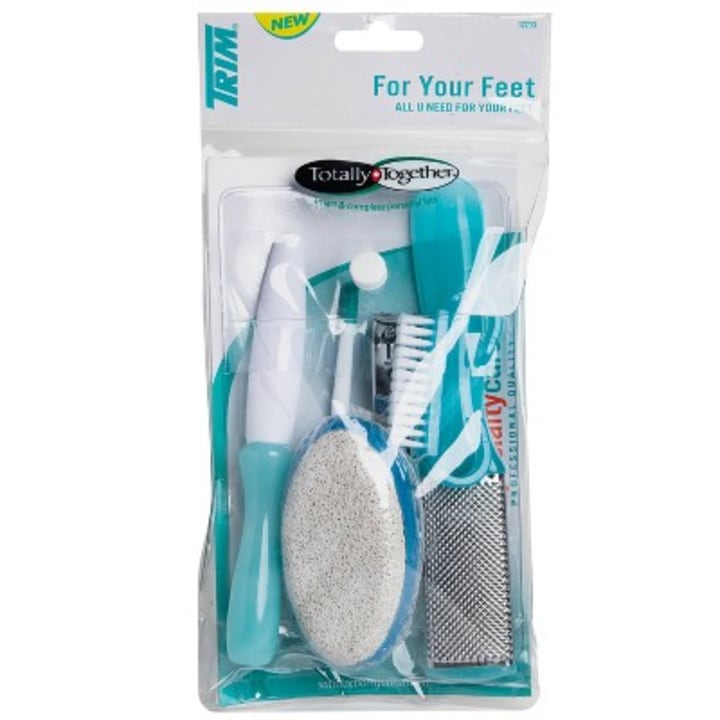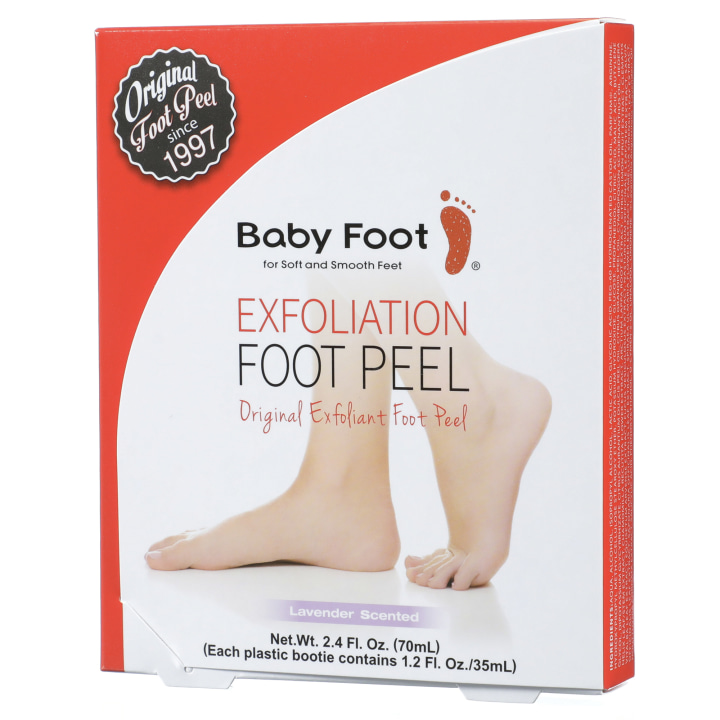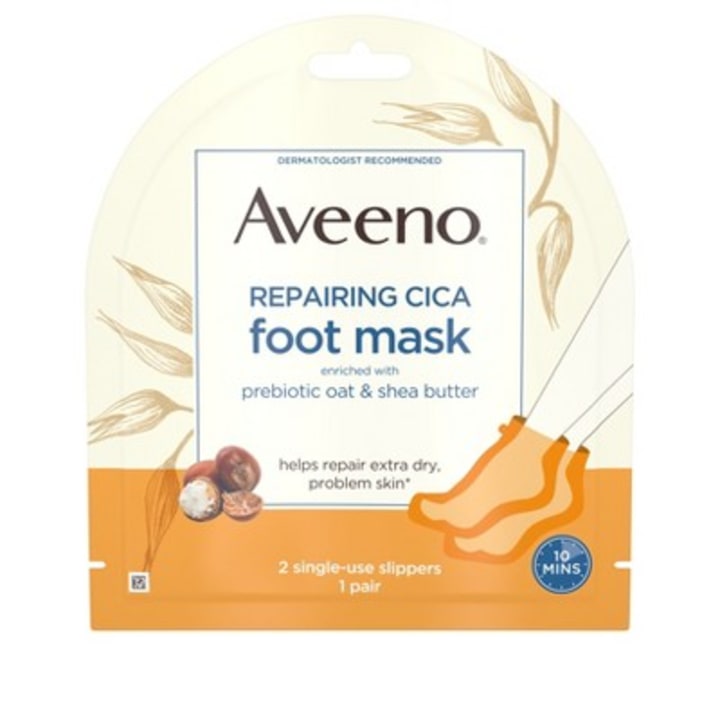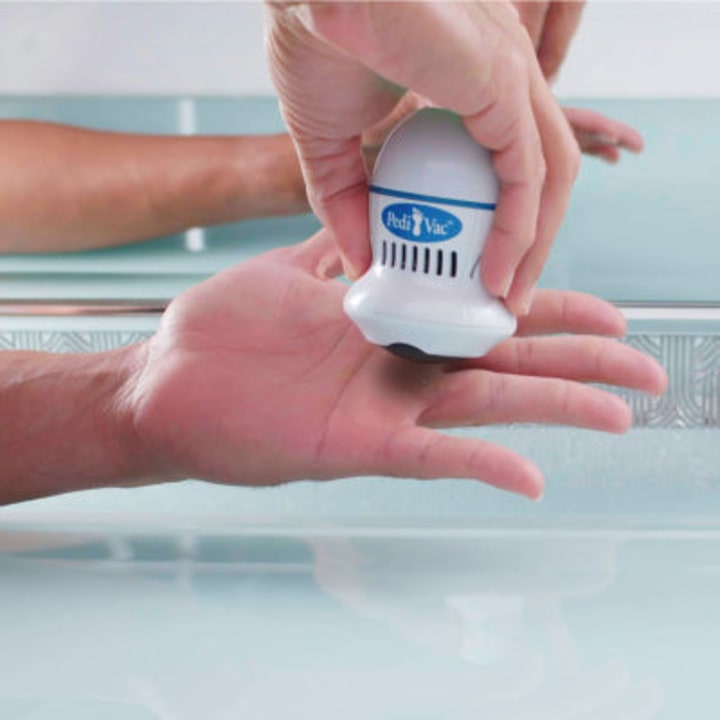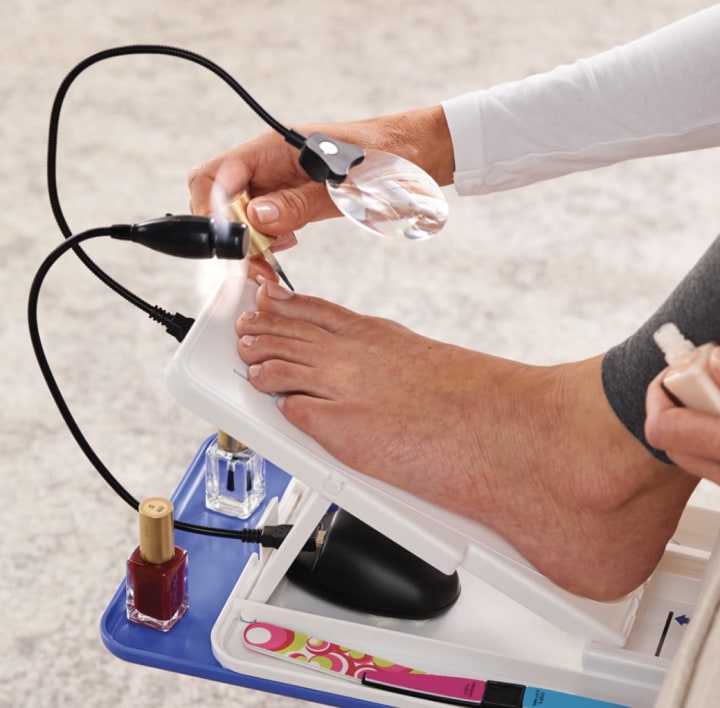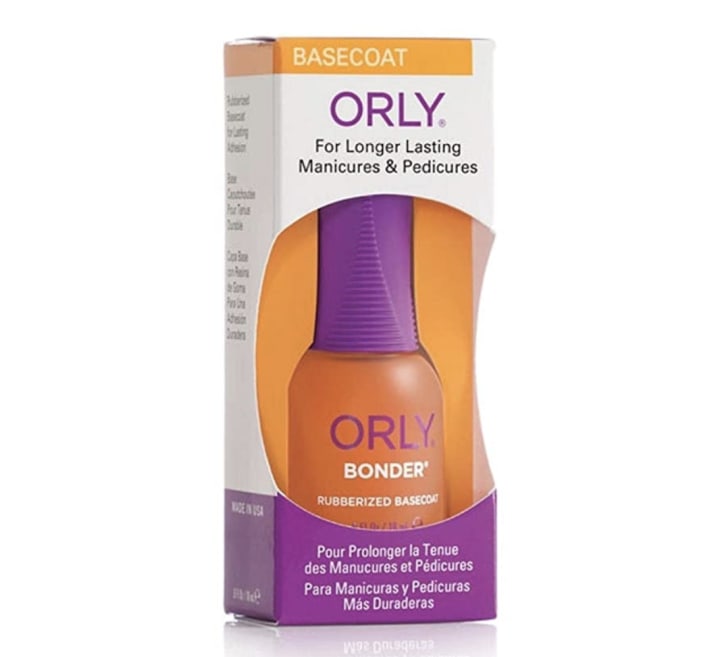We're already halfway through spring and summer is quickly approaching, which means it's time to start breaking out the flip flops and sandals. After a long winter of hiding our feet away in fuzzy footwear and winter boots, they could probably benefit from a pedi right now.
While regular pedicure treatments are beneficial for more than just beauty and relaxation reasons, the costs can quickly add up to more than you’re willing to spend. Luckily, there are a plethora of tools available that make at-home pedicures easy, manageable and budget-friendly.
Shop TODAY looked to a few experts to help come up with the best plan for an at-home pedicure and understand why engaging in the treatment regularly is so beneficial.
Benefits | At-home tools | Tips | FAQs | Meet the experts
What are the benefits of getting regular pedicures?
Getting regular pedicures can help tackle issues like ingrown toenails, impacted skin and uncomfortable calluses that can impact the way you walk, leading to other issues like knee, back and hip pain.
“People don’t realize the benefits of a pedicure isn’t just about pretty toes. If you have really bad calluses, you don’t even know you’re doing this but your body automatically compensates and you walk differently,” explains nail artist Michelle Piacentino, owner of Nails by Michelle.
Taking care of calluses and corns, which are buildups of a thickened outer layer of skin, can also make walking and wearing shoes feel more comfortable, adds podiatrist Dr. Jane Andersen, DPM. “There are people who really rely on that to walk comfortably, to keep those under control.”
Andersen emphasizes that pedicures are not advised for people who have diabetes, a vascular disease in their feet, neuropathy or numbness because they have the highest risk of issues during a pedicure, but says they’re okay for a healthy person with good circulation.
Nail technician Karinna Ramos adds that people can often mistake pain from impacted skin for an ingrown nail, so pedicures can help resolve that issue. “You’re soaking your feet...the cuticle and the dead skin that’s attached around the toenail [so] it’s easier for the nail technician that’s performing the pedicure on you to get out all the dead skin so that way it removes the pressure so you no longer have pain,” she explains, before adding that leaving impacted skin unattended for too long could result in redness, soreness and tenderness.
“The polish is a perk. It’s the pedicure that matters. People don’t realize how important a pedicure is until it relieves their back pain,” Piacentino says.
Here are a few pedicure tools that will help you create a salon-worthy treatment right at home. Plus, find more tips below from the experts about what you should (and shouldn't) do for the best results.
Tools for an at-home pedicure
Mantello Foot Soaking Bath Basin
This bath basin is perfect for a simple foot soak like Ramos mentioned. Set it where you need it, fill it with whatever and soak your feet while you relax and watch your favorite TV show or catch up on another chapter of your current read.
Trim Nail Care Cuticle Sticks
Orangewood sticks are thin sticks that have one rounded end for cuticle pushing and one pointy end clearing out under the nail. This pack of 12 from Target is less than $2 and has enough to last you for several pedicures before needing to restock.
CND Shellac Power Polish Top Coat
While Piacentino says you don't need gel polish on your toes, if you're going on a beach vacation, you might benefit from a gel top coat for an added layer of protection. For that — and for full sets of nails — she loves Shellac polishes.
"I swear by this stuff. It’s the only product on the market that is not fully gel. It’s half gel and it’s half nail lacquer. You can take it off at home and it does not damage your nail at all," she raves. "Once you Shellac, you’ll never go back."
Tweezerman Neon Hot Nail Files
A simple nail file like this one is perfect for rounding out the edges of nails to keep ingrowns from developing.
Ulta Beauty 4-Way Nail Buffing Block
To exfoliate the top of your nail like Piacentino recommends, you'll need a buffing block like this one. It has four sides with varying degrees of roughness so you can shape, buff, smooth and shine with just one tool.
Revlon Shape 'N' Buff
Say goodbye to separate filing and buffing tools with this all-in-one creation from Revlon. Ringing in at less than $5, it's wallet-friendly and can be slipped into your purse so you can keep your nails in good shape no matter where you are.
Cuccio Naturale Cuticle Revitalizing Oil
Keep all of your nails hydrated with this top-rated cuticle oil that comes in over a dozen different scents. With over 116,000 reviews, shoppers love how hydrating it is and many have said they won't buy any other brand after trying this one.
HoMedics Bubble Foot Spa with Heat Boost Power
Before you do anything, you'll want to soften your cuticles and give your feet a break in a tub of warm water. This HoMedics foot bath comes with a pedicure brush and pumice stone to relax and revitalize your feet. It has a heat booster function to help maintain the temperature of warm water you put in.
Purely Northwest Foot Soak with Lavender and Epsom Salt
To add a few more benefits to your foot spa, you can toss in this foot soak made with calming lavender and Epsom salt. The relaxing blend rejuvenates your feet by soothing tired muscles and helping revive cracked heels and calluses.
Trim Totally Together Personal Grooming Pedicure Kit
This versatile pedicure kit is a must-have, whether you want to clip nails or buff heels. It comes with a nail file, nail clipper, a cuticle pusher, pumice stone and more.
Baby Foot Exfoliation Foot Peel
The Baby Foot one-hour foot peel will make your feet smooth and soft, just like a baby’s foot! The treatment has 16 natural extracts that are scientifically formulated to gently exfoliate and moisturize at the same time, according to the brand. It's a little bit gross — but totally worth it.
Aveeno Repairing CICA Moisturizing Foot Mask
For a deeply moisturizing foot mask, look no further than this popular Aveeno repairing mask. Each package contains one pair of slippers filled with prebiotic oat and shea butter, which will help soothe your dry skin.
Amope Pedi Perfect Electronic Foot File & Foot Smoother
To really make a difference with your rough calluses, an electronic foot file is the ultimate pedicure tool. This one from Amope will effectively buff away thick, hard skin and remove dead skin to reveal smooth feet. It comes with an extra coarse roller head that spins 360 degrees for quick results with zero effort.
Pedi Vac
The Pedi Vac is another great tool to use to get rid of dead skin. It's a motorized callus remover with a built-in vacuum that can remove rough skin in no time. Since do-it-yourself callus removers can sometimes be painful and the blades can leave behind quite the mess, the Pedi Vac sucks up the mess, allowing you to get the job done without the need for cleanup.
Stedi Pedi
Say goodbye to back pain from hunching over during those at-home pedicures. The Stedi Pedi is here to help make clipping, filing and painting your toes comfortable and easy. The product keeps your foot in the perfect position, features an LED light, a 3X and 5X magnifier, a quick-dry fan and a pull-out drip tray to prevent messes.
Orly Nail Bonder Base Coat
A long-lasting pedicure starts with a good base coat. Before painting your toes with a fun spring nail color, use this bonding coat. It's formulated to grip onto the nail's surface and the nail lacquer to make polish last longer.
O'Keeffe's Healthy Feet Foot Cream
If you suffer from dry feet, the O'Keefe's Healthy Feet Foot Cream will quickly become a staple for you. With over 56,000 verified five-star ratings and a high four-star average on Amazon, you know it must be good, too!
The foot cream creates a protective layer on the skin’s surface that instantly boosts moisture levels and helps prevent further moisture loss. Many people love this product because it works fast — some even said that they saw results in just a few days.
Tips for doing a pedicure at home
Ramos, Piacentino and Andersen share a few do's and don't's for giving yourself a safe and spa-worthy pedicure at home.
Soak your feet. You’ll want to start by soaking your feet, Ramos recommends. This can come in the form of taking a long shower or intentionally soaking your feet separately in a basin of water. This will help to soften up the cuticle around the toes and, when you’re done, you can use a towel to wipe around the toes to slough off dead skin.
Cut and file your toenails. Piacentino, Ramos and Andersen recommend cutting your toenails straight across and making sure to round the edges. If you don’t, sharp edges can become painful ingrown toenails that you’ll have to deal with later on.
Buff the nails. Describing the process as “exfoliating the top layer of your nail,” Piacentino suggests using a buffer to lightly buff the top of the nails on your hands and feet once a week. She says it will help increase circulation to your nail beds, assist with removing any yellowing or discoloration and leave you with stronger, healthier nails.
Use a pumice stone on calluses. When it comes to managing calluses, Andersen and Piacentino agree that using a pumice stone is the safest way to go for at-home care. However, you should be sure to not remove the callus completely and over soften your skin, especially if you spend lots of time on your feet, Piacentino warns. “You’ll be raw and you’ll be sorry,” she says, before adding that there’s the potential to cause an infection by removing it completely. Another not-so-safe way to remove calluses is with a razor. Not only is the practice illegal in some states, it is yet another way to cause an infection.
Do not cut your cuticles. Piacentino and Andersen both advise against cutting your cuticles at home. Since your cuticles act as a protective barrier to the nail, cutting it away removes that layer of protection and opens up the possibility of infection. The most you should do is push them back to keep your toes looking clean. “Cuticles actually are what nourishes your nail,” Piacentino says.
Moisturize. Just like the rest of your body, moisturizing is an important part of the pedicure process. Moisturize your feet after removing calluses because the moisturization won’t penetrate the thickened skin. Another option aside from traditional moisturizer is using slightly warmed honey, Piacentino recommends. “If it’s warm, it opens your pores which gives you maximum absorption.”
Keep your cuticles hydrated for longer-lasting polish. The key to long-lasting polish on your toes is an application process that stems around hydrated cuticles, Piacentino advises. Start by saturating a cotton swab or orangewood stick with acetone, pushing your cuticles back and dragging it around the cuticle and under the toenail. Then, wipe the nail bed off pre-polish application. Once your polish is applied, put back all the oil you just wiped off with a cuticle oil (though she said any oil will do the trick and will also help with drying time). If you follow these steps and use cuticle oil every day, she says you can get an extra few days out of your polish before it starts to wear down.
Don’t keep your polish on for too long. You’ve done it! You've completed an at-home pedicure and you’re now left with soft feet and polished toes. Just don’t forget to change your polish every once in a while, Andersen notes. Leaving the polish on for too long can leave you blind to any potential infections forming under your nail beds, which can complicate the treatment process.
Frequently asked questions
Are there any risks when getting a pedicure?
The number one risk that Andersen and Piacentino mention that could come from getting pedicures is the chance of infection. Their main tips are the same: If you’re in a salon, pay close attention to the tools they use. Make sure the basins they are using for pedicures are being properly cleaned between clients. Piacentino also recommends avoiding places that use jetted tubs entirely because they are extremely difficult to clean properly.
You should also pay attention to the tools they’re using directly on your feet like the nail file, clippers and cuticle tools. You’ll want to make sure they’re sanitized properly or, preferably, they use a new set of disposable tools for each client. If you’re still not comfortable, Andersen recommends bringing your own tools to ensure they are only being used on you.
To reduce the risk of infection, Andersen suggests not shaving your legs for 24 hours before your appointment. “That creates microscopic cracks in your skin that act as a portal for bacteria to get in,” she explains.
She also recommends asking for a basin of water to soak your feet in instead of a whirlpool or jetted tub because liners won’t be able to fully protect you from any bacteria potentially circulating through the filter.
“Just be cognizant that if your foot hurts and you feel like you’ve got your callus under control, then there’s another reason for your foot hurting and you should see your podiatrist to see what that is because there could be a lot of other things,” Andersen says. While some issues can be solved superficially at home, some are more serious and require the treatment of a professional.
Meet the experts
- Michelle Piacentino is a nail artist based in Dobbs Ferry, New York and the owner of Nails by Michelle.
- Dr. Jane Andersen, DPM, is a board-certified podiatrist practicing at Foot & Ankle Specialists of the Mid-Atlantic in Chapel Hill, North Carolina.
- Karinna Ramos is a nail technician based in Staten Island, New York.
